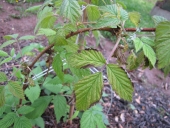Why I believe that plants feed mulch.:
I used to watch a bunch of farmer videos for fun. Many were from the SARE Youtube channel. All were about cover crops. This includes farmers from all around the US of A who experimented with various crops. In general they planted with a roller crimper seed drill, or broadcasted (often by plane). Some broadcasted while corn was growing. I think they crimper drilled in spring (but sometimes frost seeded) and drilled or broadcasted in fall.
Numerous farmers showed all the following to the point of redundancy.:
1. There were more soil animals where there was a strong cover.
2. Like you mentioned, roots punched through stuff.
3. A farmer begins the practice of keeping the soil well covered with live plants, and minimizing the amount that the soil is disturbed. On year x (x>2), he finds that the crop residue left after crimping rots a lot faster than it did on year 1.
My interpretation:
1. I thought more worms means more composting.
2. People have shown by shredding leaves that shredded ones rot faster.
3. Plants helped increase the rot rate.
Research and universities:
I have done minimal research. When I research, I favor stuff from certain universities. Aside from searching for university stuff, when I want an answer, I use plos.org, and pubmed.gov. I haven't invested time to do that for this topic.
There's lots of research on mycorrhizal fungi and how it rots stuff.:
She looks like an expert.
about the fungi
My other topic about my soil journey







